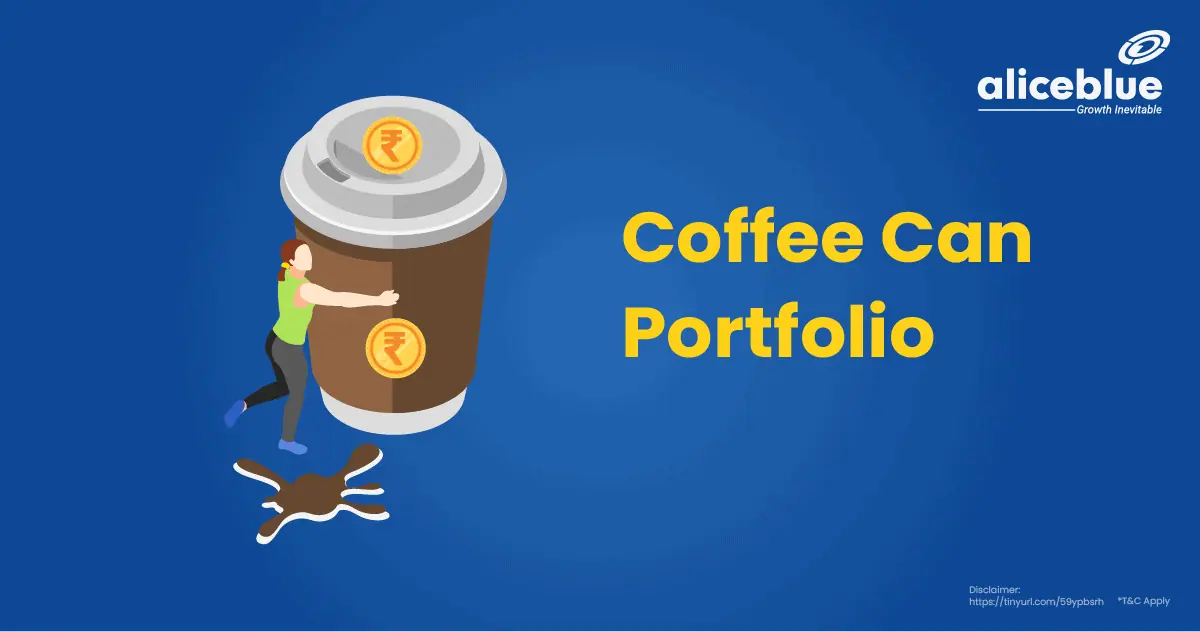The Cup and Handle pattern is a bullish chart formation that signals a potential upward trend in a stock’s price. This pattern is recognized by its resemblance to a teacup, with the “cup” representing a period of consolidation followed by a smaller pullback, the “handle,” before a breakout occurs.
Content ID:
- What Is a Cup and Handle Pattern?
- Cup And Handle Pattern Examples
- Cup And Handle Pattern Rules
- What Are The Types Of Cup And Handle Patterns?
- What Are The Advantages Of the Cup And Handle Pattern?
- What Happens After A Cup And Handle Pattern Forms?
- How To Identify A Cup And Handle Pattern?
- Limitations Of The Cup And Handle Pattern
- What Is a Cup and Handle Pattern? – Quick Summary
- Cup And Handle Pattern- FAQs
What Is a Cup and Handle Pattern?
The Cup and Handle pattern is a technical analysis tool used by traders to identify potential bullish stock movements. It consists of a round-bottomed cup followed by a small downward drift, the handle, indicating a consolidation phase before a likely upward breakout.
Comprehensively, this pattern is seen as a bullish continuation signal, suggesting that after a period of consolidation within the handle, the stock is likely to break out and continue its previous upward trend. The formation of the cup signifies a period where the stock has hit a bottom and is starting to rebound, while the handle represents a final sell-off before the stock moves higher. Traders often use this pattern to make buy decisions, expecting the price to rise following the pattern’s completion.

Cup And Handle Pattern Examples
An example of the Cup and Handle pattern might occur when a stock drops to Rs 100, then gradually rises back to Rs 150 forming the cup, and then slightly dips to Rs 145 forming the handle, before surging past Rs 150.
In more detail, suppose a stock experiences a significant drop from Rs 150 to Rs 100, followed by a steady recovery back to Rs 150 over several months, forming the cup. After reaching Rs 150, the stock might experience a small pullback to Rs 145 over a few weeks, forming the handle. If the stock then breaks out above Rs 150 on high volume, it confirms the Cup and Handle pattern, suggesting a strong buy signal with the expectation of continued upward momentum.
Cup And Handle Pattern Rules
The main rules for identifying a Cup and Handle pattern include the cup’s formation over 1 to 6 months with a rounded bottom and the handle’s development over 1-4 weeks without a significant drop. Additional rules in bullet points are:
- Duration: The cup should form over a period ranging from 1 to 6 months, often showing a rounded or U-shaped bottom rather than a V, indicating a gradual stabilization and recovery of the stock price.
- Depth: Ideally, the cup should not be overly deep. A shallower cup suggests a stronger stock that didn’t fall too far from its high.
- Volume: There should be an observable decrease in volume during the formation of the handle, followed by an increase in volume as the price breaks out from the handle.
- Handle Position: The handle should form in the upper half of the cup, and it should not drop into the lower half. This indicates that selling pressure is not significant enough to push the price down too far.
- Breakout: The buy signal is typically given when the price moves above the handle’s resistance with increased volume, indicating strong buying interest.
What Are The Types Of Cup And Handle Patterns?
There are two main types of Cup and Handle patterns: the Classic Cup and Handle and the Intraday Cup and Handle.
- Classic Cup and Handle: This pattern is seen on daily or weekly charts and can last for several months. It’s useful for investors who are interested in identifying long-term bullish trends.
- Intraday Cup and Handle: This pattern appears on shorter time frame charts, such as hourly or minute charts. It’s helpful for day traders looking to spot potential quick upward moves within a single trading day.
What Are The Advantages Of the Cup And Handle Pattern?
The main advantage of the Cup and Handle pattern is its ability to signal impending bullish trends, providing traders with a clear indication to consider buying. Other advantages include:
- High Success Rate: When properly identified, the Cup and Handle pattern has a high success rate for predicting bullish breakouts, making it a reliable indicator for traders looking for upward momentum.
- Clear Entry and Exit Points: The pattern provides explicit entry points after the handle’s breakout and exit points upon failure to breakout or achieve the target, facilitating straightforward risk and profit management strategies.
- Applicability Across Time Frames: This pattern is versatile, applicable not only on longer-term charts for significant trends but also on intraday charts, catering to a wide range of trading styles from long-term investing to day trading.
- Objective Pattern Recognition: The Cup and Handle pattern is defined by specific criteria, reducing the subjectivity in chart analysis and aiding traders in making objective, rule-based trading decisions.
What Happens After A Cup And Handle Pattern Forms?
After a Cup and Handle pattern forms, the expectation is for a bullish breakout, where the price breaks above the handle’s resistance level, potentially leading to significant upward momentum. Here’s a comprehensive breakdown of the sequence:
- Initial Breakout: Once the handle portion completes, and the price breaks above its resistance (the upper trend line of the handle), it signals the start of a potential bullish trend. This breakout is often accompanied by increased volume, reinforcing the pattern’s validity.
- Continued Price Rise: Following the breakout, the stock price is expected to continue rising, ideally reflecting the depth of the cup. The distance from the bottom of the cup to the pattern’s breakout point can be projected upwards to determine a target price.
- Possible Retest: It’s not uncommon for the price to retest the breakout level, now turned support, before continuing its upward trajectory. This retest can serve as a confirmation of the pattern’s strength and the market’s bullish sentiment.
- Sustained Bullish Trend: If the breakout is genuine, the market should witness a sustained bullish trend, validating the Cup and Handle pattern as a precursor to a long-term upward movement in the price.
How To Identify A Cup And Handle Pattern?
To identify a Cup and Handle pattern, traders look for a specific formation on a stock’s chart that suggests a bullish continuation of its price movement. The process involves several key steps:
- Identifying the Cup Formation: The cup is characterized by a rounding bottom that signifies a period of consolidation followed by a recovery that mirrors the initial decline. This portion of the pattern typically lasts from one to six months and resembles a “U” shape.
- Spotting the Handle: After the cup forms, the price undergoes a slight downward drift in a narrow price range, forming the handle. The handle is usually shorter in duration, lasting from one to four weeks, and should not dip below the half-way point of the cup.
- Volume Observation: During the formation of the cup, volume tends to be higher at the beginning as the price declines and then diminishes at the bottom of the cup, picking up again as prices start to rise. In the handle phase, volume should decrease as prices consolidate.
- Breakout Confirmation: The pattern is confirmed when the price breaks out from the handle formation, typically accompanied by an increase in volume. This breakout is considered a buy signal, indicating potential for upward price movement.
- Consideration of Market Context: While the Cup and Handle pattern can be a powerful indicator, it’s important to consider it within the broader market context, including trends, economic indicators, and other technical analysis factors, to make informed trading decisions.
Limitations Of The Cup And Handle Pattern
The main limitation of the cup and handle pattern is that identifying the Cup and Handle pattern can be subjective. Different traders might see the pattern forming at different times or not at all, leading to varied interpretations and actions.
- False Signals: Like all trading patterns, the Cup and Handle can produce false signals. A pattern that appears to indicate a bullish trend may not lead to the expected price increase, potentially resulting in losses.
- Time Frame Variability: The pattern’s effectiveness can vary across different time frames. While it might work well on longer-term charts, its reliability on shorter time frames like daily or hourly charts can be less predictable.
- Market Conditions: The pattern’s success is also influenced by overall market conditions. In a bearish market, even a well-formed Cup and Handle may not lead to the anticipated bullish breakout.
- Confirmation Need: Traders often wait for additional confirmation beyond the pattern itself before making a trade, which can delay entry points and potentially reduce profitability.
What Is a Cup and Handle Pattern? – Quick Summary
- The Cup and Handle pattern in the stock market signals a bullish trend, where the “cup” forms through a consolidation period and the “handle” through a slight pullback, leading to a breakout.
- This pattern, recognized by a “cup” formation followed by a “handle,” serves as a technical analysis tool to identify bullish stock movements, with the “handle” indicating a pre-breakout consolidation.
- Let’s consider the stock of XYZ Ltd. It starts at ₹500, drops to ₹400, forming the “cup,” then climbs back to ₹500. Subsequently, it dips slightly to ₹480, creating the “handle,” before surging to ₹550, indicating a bullish breakout.
- Rules for identifying the Cup and Handle pattern emphasize the “cup’s” formation over several months and the “handle’s” formation without significant drops, ensuring a reliable breakout signal.
- The Cup and Handle pattern types include the Classic Cup and Handle, observed over longer time frames, and the Intraday Cup and Handle, occurring within shorter periods, each with distinct formation times for the “cup” and “handle.”
- Advantages of the Cup and Handle pattern highlight its efficacy in signaling bullish trends through the “cup” and “handle” formation, offering traders clear buy signals and high success rates for bullish breakouts.
- After the Cup and Handle pattern forms, a bullish breakout above the “handle’s” resistance is expected, leading to significant upward momentum and confirming the pattern’s predictive value.
- Identifying a Cup and Handle pattern involves recognizing the “cup” through a rounded bottom consolidation and the “handle” through a minor pullback, setting the stage for a bullish breakout.
- The main limitation of the Cup and Handle pattern lies in the subjective interpretation of the “cup” and “handle” formations, leading to varied trading decisions among investors.
- Start trading in the stock market at no cost with Alice Blue.

Cup And Handle Pattern- FAQs
What Is a Cup and Handle Pattern?
A Cup and Handle pattern is a technical analysis tool that predicts a bullish continuation of a security’s price. It’s characterized by a ‘cup’ formation followed by a smaller ‘handle’ dip before an upward trend.
What Are The Advantages Of The Cup And Handle Pattern?
One major advantage of the Cup and Handle pattern is its reliability in signaling upcoming bullish trends, offering investors potential entry points for profitable trades. It’s known for its high success rate in forecasting price movements.
What Are The Rules For Cup And Handle Pattern?
- The cup has a smooth U-like shape, not a sharp V, and takes at least 7 weeks to form.
- The handle should decline slightly and last at least a week.
- The entire pattern forms above the 200-day average market price.
- The cup’s depth should be moderate, between 12% and 35%.
What Is The Best Time Frame For Cup And Handle?
The Cup and Handle pattern is best observed in time frames ranging from 1 to 6 months for the cup formation and 1 to 4 weeks for the handle, making it versatile for both short and long-term analysis.
Is Cup And Handle A Bullish Pattern?
Yes, the Cup and Handle is a bullish pattern indicating that after a period of consolidation and a slight pullback, the security is expected to break out and continue its upward trajectory.







